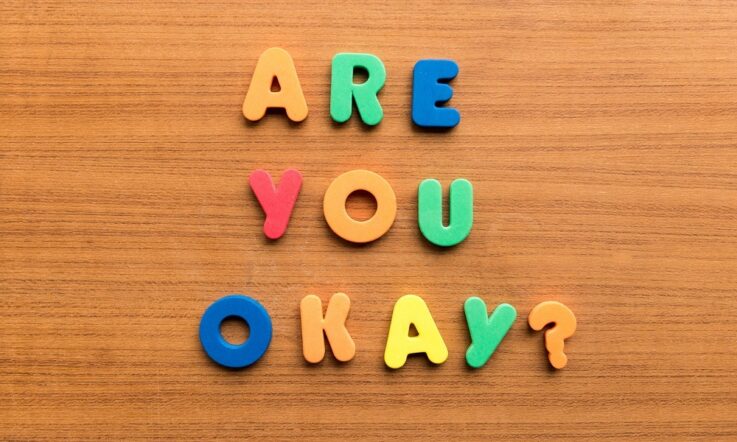Teaching involves emotional work. How could it not? The work is primarily relational, and relationships are emotionally evocative. Many studies recognise the emotional nature of teaching (Chen, 2021). What is less understood is how to navigate the emotional work of teaching.
Such a conversation is timely for at least 2 reasons: teachers are often expected to remain emotionally neutral; and we live in a context of rolling crises that is a catalyst of heightened emotion.
In recent times the world has weathered some significant adverse events. The COVID-19 pandemic thrust the world into unexpected and significant change, and forced us to address immediate health and economic threats. Even before COVID-19 though, the ongoing challenge of 'climate change, ecological degradation, migrating populations, conflict, pervasive inequalities, and predatory commercial practices [that] threaten the health and future of children in every country' was recognised (Clark et al., 2020).
More recently, across Australia, we have faced fires, floods and other climate-related challenges dispossessing people of their homes and loved ones. The United Nations (UNICEF, 2022) recognises that education systems are under strain the world over, trying to meet the changing demands and address the knock-on complications.
The gravity of the problems we currently face can feel overwhelming – like a constant tsunami. One of the reasons is that we tend to solve problems by breaking them down into their parts to simplify them, which is an advantageous strategy. However, many of the problems we currently face are not easily simplified.
Decades ago, Rittel and Webber (1973) noted that social problems were becoming 'wicked' rather than 'tame'. Tame problems have a straightforward solution, likely because problems were localised. For instance, expand the school if a school is overcrowded – the problem is localised. Whereas 'wicked' problems are complicated – they are dilemmas that have multiple ways forward and need consideration from many different angles, which makes sense in a globalised and technologically advanced environment. There are many more stakeholders. A solution might be terrific from one perspective, but less so from another.
What are the issues in schools?
I conducted a research project to explore the emotional dimensions of teacher practice through narrative inquiry, where 6 teachers shared in-depth accounts of their practice over 18 months. The experiences critical to them were easily identifiable as surface issues, such as textbook selection, telling a student they have failed, or implementing the uniform policy (Hopman, 2021).
These are just a few localised examples and are not representative of the plethora of issues schools currently face. They are simply examples of the everyday matters that teachers feel are significant to their work. Responses from teachers involved in the study often featured the larger problem of feeling constrained by finances, scheduling or policy – the preferred textbook costs too much, the timetable did not allow for deeper conversation with the failed student, and the uniform policy had to be implemented even though it was detrimental to teacher-student relationships and student wellbeing.
The issues are linked to even larger systemic complications. The problems on the surface have a genesis that is not always obvious, even to oneself. For instance, the larger issue of teachers lacking autonomy due to finance, scheduling or policy limitations was not often the first thing that came to the teachers' minds. However, the feeling of being constrained (the emotion) was always lurking just behind the surface. With a little help, the teachers could access that emotion and use it to help navigate their way through the world and the larger systemic kind of problems.
Emotion is implicated in all experiences but is often ignored, particularly due to professionally generated emotional rules. For instance, one such pervasive rule is that teachers should not feel or display fear – as one research participant commented: 'you don't want students to ever think that you're scared' (Hopman, 2019).
There are 2 ways to not show fear; 1) it can be hidden, which requires what Hochschild (2012) refers to as ‘surface acting’; or 2) deep acting can be employed to remove the feeling all together, for example when a person convinces oneself of not being afraid.
These strategies are employed in navigating everyday life and are not necessarily a problem until they are over-employed. There is enough evidence to indicate that an ongoing pattern of avoiding emotion can be harmful, even making a person feel disconnected from oneself (Wang et al., 2019).
In researching the emotional work of teachers, it is clear that they are often expected to remain emotionally neutral or to fake 'positive' emotions when not flowing naturally. If we add these together, we have a circumstance where teachers are increasingly emotionally provoked, either through the existing constraints of their work or the response to rolling crises, yet are mostly expected to remain emotionally neutral. In other words, it is like trying to crest a tsunami, which is highly unlikely.
Supporting teachers in their emotional work
Unfortunately, there is no simple solution to a complex problem. There are, however, ways to support teachers and schools to navigate complex problems. Teachers need to be allowed and encouraged to feel. I am not advocating for every emotion to be expressed as it is felt – that would likely lead to other kinds of disasters.
Teachers having space to discuss their emotions and the issues that evoke them leads to a higher probability of finding creative and collaborative ways to manage them. I designed a 4-stage facilitated Collaborative Inquiry Process (CIP) to give space to teachers to:
- share their experiences and related emotion
- recognise the strength in their practice (because teachers tend to get caught up with what went wrong)
- listen to other's perspectives, and
- inquire into the deeper issues driving the surface issue (Hopman, 2021).
Such conversations can lead to action that drives real change because it goes beyond the simple surface solution. As much as we might like only to navigate calm flat waters, the waves will roll on, regardless of the strategies we employ to ignore them.
In such circumstances, intense emotion can be felt but unknowable, and in other words, can be described as anxiety. Healthy schools need healthy teachers, and while anxiety is inherent to being human, excessive anxiety can be harmful and debilitating, particularly when we are facing a teacher shortage in times that demand feeling and reaction.
References
Clark, H., Coll-Seck, A. M., Banerjee, A., Peterson, S., Dalglish, S. L., Ameratunga, S., . . . Costello, A. (2020). A future for the world’s children? A WHO–UNICEF–Lancet commission. The Lancet Commissions, 395(10224), 605-658. https://doi.org/10.1016/S0140-6736(19)32540-1
Chen, J. (2021). Refining the teacher emotion model: evidence from a review of literature published between 1985 and 2019. Cambridge Journal of Education, 51(3), 327–357. https://doi.org/10.1080/0305764X.2020.1831440
Hochschild, A. R. (2012). The managed heart: Commercialization of human feeling. University of California Press.
Hopman, J. (2019). Teacher emotional rules. In A. Gutierrez, J. Fox, & C. Alexander (Eds.), Professionalism and teacher education (pp. 157-173). Springer.
Hopman, J. (2021). Surviving emotional work for teachers: improving wellbeing and professional learning through reflexive practice. Routledge.
Rittel, H. W. J., & Webber, M. (1973). Dilemmas in a general theory of planning. Policy Sciences, 4(2), 155–169. https://doi.org/10.1007/BF01405730
Wang, H., Hall, N. C., & Taxer, J. L. (2019). Antecedents and consequences of teachers’ emotional labor: a systematic review and meta-analytic Investigation. Educational Psychology Review, 31(3), 663–698. https://doi.org/10.1007/s10648-019-09475-3
What are some of the issues you currently face at your school? What kinds of emotions do they evoke in you? How do you manage these emotions?
As a school leader, do you provide space for teachers to discuss their emotions and the issues that evoke them? How does this inform the range of wellbeing supports offered?



